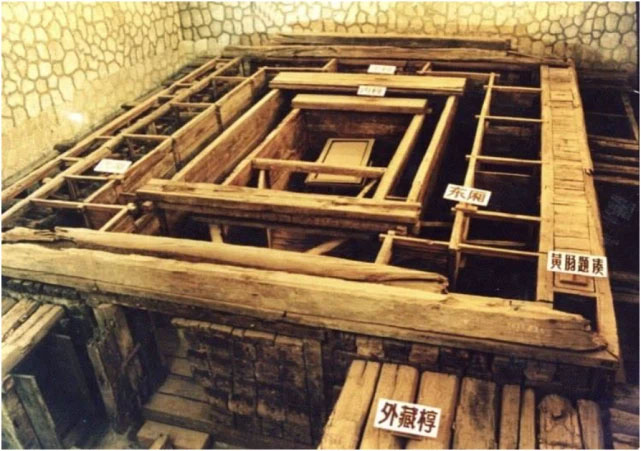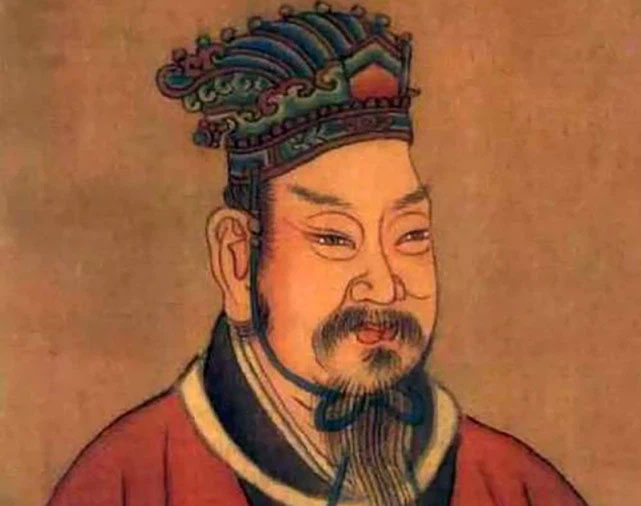In May 1989, in Jiangzhou City, Jiangsu Province, China, a grand Han Dynasty tomb was discovered, containing many important artifacts such as decorative mirrors, jade items, and ancient porcelain, all classified as a cultural relic of level 2.
Shortly thereafter, archaeologists uncovered four other tombs from the Han Dynasty, leading experts to deduce that this area is likely a noble tomb complex from this dynasty.
These four tombs remained intact underground and were only observed using geophysical remote sensing technology. The survey results indicated that one of the tombs was made of wood, measuring relatively large at 32 meters long and 12 meters wide, arranged in the shape of the character “pin” (品). This is very likely the renowned cedar tomb made from precious cedar wood – the highest-ranking burial form during the Han Dynasty.

The cedar tomb is the most noble burial form during the Han Dynasty. (Image: Sohu).
After researching historical texts, experts confirmed that the owner of this wooden tomb was Liu Yi – the King of Wu, a vassal state under the Han Dynasty. Liu Yi’s father was Liu Zhong, the second son of Liu Tai Gong, the retired emperor of the Han Dynasty, and the brother of Liu Bang, the founding emperor of the Han Dynasty. In other words, Liu Yi was a cousin of Liu Bang.
According to historical records, Liu Yi was a man of great ambition, always nursing dreams of territorial expansion and usurping the throne. The root cause of this ambition may stem from the fact that Liu Yi’s son, Crown Prince Liu Xian of Wu, was killed by Crown Prince Liu Kai (later Emperor Jing of Han), leading to Liu Yi harboring deep resentment and a desire for revenge against the Han.

Liu Yi, a cousin of Liu Bang, always dreamed of usurping the Han throne. (Image: Sohu).
Seeing that Liu Yi’s tomb remained intact, showing no signs of disturbance or damage, experts decided against excavation, opting to preserve the tomb’s condition. However, this decision not only failed to protect the cultural relics but also led to a significant disaster!
Rumors about Liu Yi’s tomb soon reached the ears of tomb raiders. In 2003, a group of tomb robbers broke in to steal treasures from the tomb’s corridor. In 2009, the robbers returned, this time gaining access to the burial chamber and stealing all the cultural artifacts inside.
By the time the archaeological team received reports from the public, they could only lament that the treasure-filled tomb they had discovered 20 years earlier was now nothing more than a collapsed, empty pit.




















































